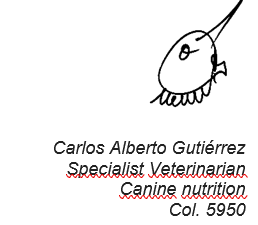
One of the most common and dangerous mistakes is to want to feed the new puppy as soon as it arrives home. This is the worst thing we can do. And what’s worse, with a new food that it has never tried before!
I always the following advice: if the puppy was eating stones in his first home, you must keep on giving it stones, metaphorically speaking, of course. What I mean is that you should not change the food, no matter what he was eating.
The second tip is not to feed the puppy as soon as it arrives home; you should wait a few hours.
The third tip is to feed him his first meal after a few hours or on the first night, in small quantities; a similar amount to what he was eating in his first home. Let him stay quite hungry. Even if it hurts our hearts, a puppy who is a little hungry is fine, whereas a puppy with indigestion from overeating may have its life put at risk.
It is quite normal for him to gulp down his food at first; in his old home, he was used to competing with his siblings for food and the slowest one ate less. If we just let him eat until he bursts, within a few hours or days he will not want to eat anymore, probably due to indigestion.
A better plan
If we want to avoid this problem, it’s very easy; let’s wait at least six to eight hours. If the puppy has arrived home late, let him wait until the next morning to eat. Allow him to explore and get to know his new home in the first few hours; he has plenty of time to keep himself entertained. The only thing allowed at first is water; let him drink as much as he wants.
I always recommend starting with “the stones he was eating” and after a few days (5-10 days, for example) start adding small quantities of lightly cooked chicken meat. I always recommend chopped chicken necks or wings. Give it a light simmer without bringing it to a full boil, but NEVER MORE THAN 3 MINUTES.
The best processed food is not even one-fifth the quality compared to a well-made homemade diet.
Another golden rule in feeding the puppy (and ourselves): It is always good to keep him a little hungry rather than filling him up.
I agree that the only animal that cooks its food is the human being, and that the best food for a dog is raw food. But here is some useful information about light cooking:
The FDA (Food and Drugs Administration) has stated that to achieve “pre-digestion” of meat (in general), it should reach a temperature of 158º F (70 °C) for 3 minutes.
How do you achieve this? I boil the water and then add the chicken meat (or whatever vegetable we are going to use), turn off the heat, and let it stand for about 2-3 minutes.
What are the advantages?
This light cooking destroys a few enzymes, but does make the meat more digestible and provides more calories. For example, 3½ oz (100 grams) of raw chicken breast provides 110 Calories while if it undergoes that slight cooking it provides 165 Calories.
It’s the same with vegetables. Although the BARF method talks about everything being raw, it is clear to me that light cooking makes the vegetable much more digestible and beneficial; you can see it in their excrement. In addition, the spinach (my favorite vegetable) stays very compact and is easier to work with and mix.
Subscribe to the free online workshop on nutrition for dogs.
Best regards

